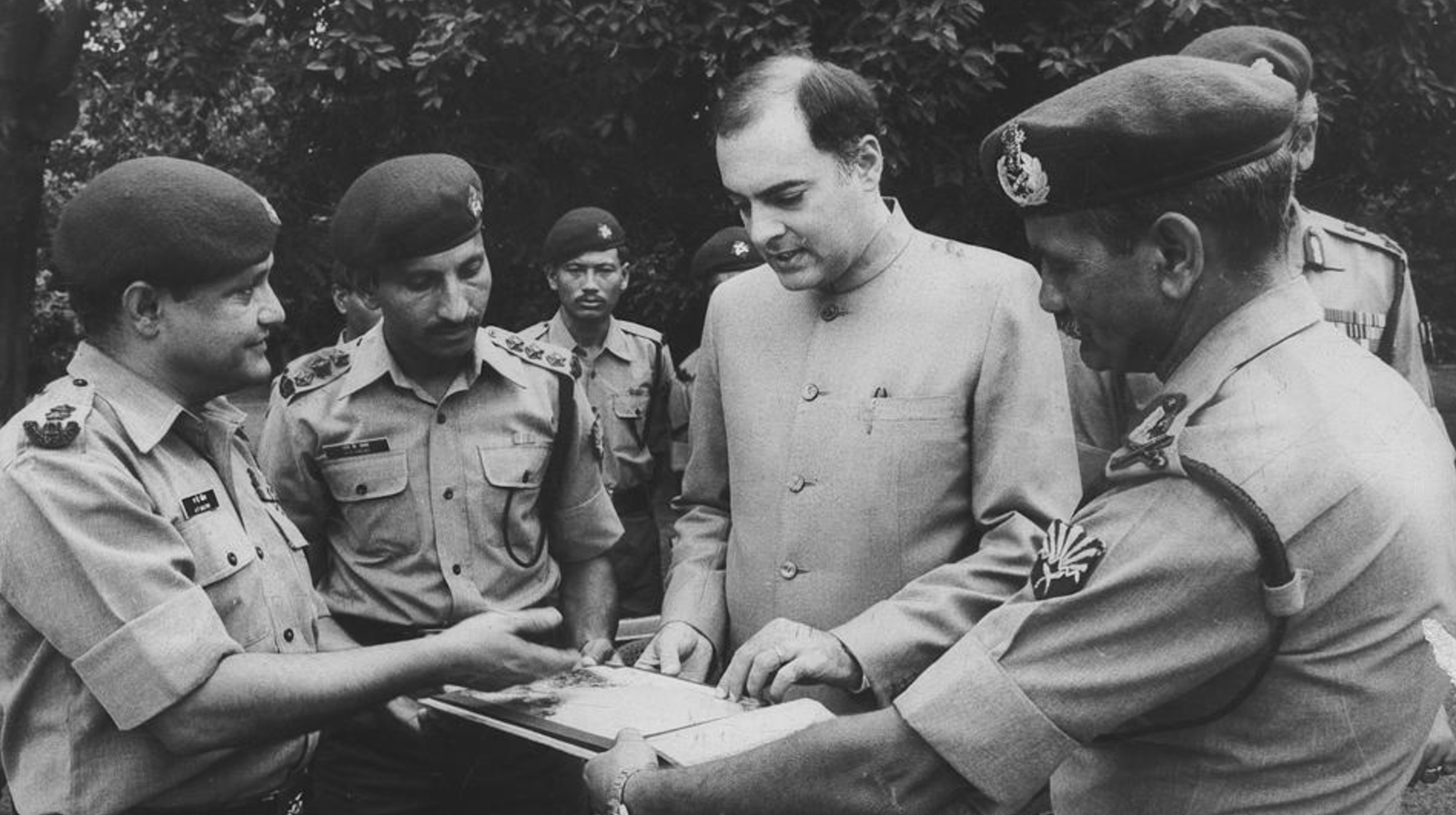SOURCE: AFI


The Indian Peace Keeping Force (IPKF) deployment in Sri Lanka from 1987 to 1990 remains one of the most controversial chapters in India’s military and foreign policy history. Often dubbed “India’s Vietnam War” due to its parallels with the United States’ prolonged and bloody conflict in Southeast Asia, the IPKF mission began with noble intentions but descended into a quagmire of violence, diplomatic fallout, and human tragedy. This operation, rooted in the 1987 Indo-Sri Lankan Accord, aimed to bring peace to a war-torn nation but instead left a legacy of loss and lessons for India.
The roots of the IPKF’s involvement lie in the escalating Sri Lankan Civil War, a conflict pitting the Sinhalese-dominated government against Tamil separatist groups, most notably the Liberation Tigers of Tamil Eelam (LTTE). By the mid-1980s, the violence had spilled over Sri Lanka’s borders, with Tamil refugees flooding into India’s Tamil Nadu state, raising domestic political pressures. India, under Prime Minister Rajiv Gandhi, sought to mediate. After years of covert support to Tamil militants by India’s intelligence agencies, Gandhi pivoted to diplomacy, brokering the Indo-Sri Lankan Accord with Sri Lankan President J.R. Jayewardene in July 1987.
The accord promised devolution of power to Tamil-majority areas and an end to hostilities, with India agreeing to deploy a peacekeeping force to oversee the disarmament of militant groups and ensure stability. The IPKF, initially welcomed by Sri Lanka’s government, arrived in late July 1987 with a mandate to act as a neutral arbiter. However, this peacekeeping dream quickly unraveled.
The IPKF’s mission was predicated on the assumption that all parties, including the LTTE, would comply with the accord. While smaller Tamil factions surrendered their arms, the LTTE, led by the cunning and uncompromising Velupillai Prabhakaran, refused. Tensions escalated in October 1987 when the deaths of 17 LTTE prisoners in Sri Lankan custody—blamed by the Tigers on IPKF inaction—sparked open hostilities. What began as a peacekeeping operation morphed into a full-scale military campaign as the IPKF was ordered to disarm the LTTE by force.
Operation Pawan, launched to seize control of the LTTE stronghold in Jaffna, epitomized the mission’s descent into chaos. The Jaffna University helidrop on October 12, 1987, intended as a swift strike to capture LTTE leadership, turned disastrous due to intelligence failures and fierce resistance, costing Indian lives and exposing operational shortcomings. Over the next two years, the IPKF engaged in brutal jungle warfare, urban skirmishes, and counterinsurgency operations across northern and eastern Sri Lanka. The LTTE, with its guerrilla tactics and local support, proved a formidable foe, drawing parallels to the Viet Cong’s resistance against American forces in Vietnam.
The human cost was staggering. Over 1,200 Indian soldiers lost their lives, with thousands more wounded, while civilian casualties—both Tamil and Sinhalese—mounted amid the crossfire. Allegations of atrocities, including massacres and human rights abuses by the IPKF, further stained India’s reputation. The mission alienated the very Tamil population it sought to protect, as well as the Sinhalese, who grew resentful of India’s intervention. By 1989, the newly elected Sri Lankan President Ranasinghe Premadasa demanded the IPKF’s withdrawal, a sentiment echoed by India’s new government under V.P. Singh. The last Indian troops left Sri Lanka in March 1990, leaving the LTTE stronger than ever and the civil war unresolved.
The parallels with America’s Vietnam War are striking: a well-intentioned intervention spiraled into a protracted conflict against a determined insurgency, with mounting casualties, domestic backlash, and no clear victory. Like Vietnam, the IPKF faced a hostile environment, shifting allegiances, and a lack of public support back home. The assassination of Rajiv Gandhi in 1991 by an LTTE suicide bomber cemented the mission’s tragic legacy, a personal and political price paid for India’s misadventure.
The IPKF experience is a sobering reminder of the perils of overreach in foreign policy. India entered Sri Lanka with a mix of humanitarian concern, regional ambition, and domestic political calculus, but underestimated the complexity of the ethnic conflict and the LTTE’s resolve. The mission exposed gaps in military preparedness, intelligence, and strategic planning, critiques that linger in India’s defence discourse even today. Internationally, it’s studied as a case of peacekeeping gone awry—ironically, more so abroad than in India, where it remains an under-discussed footnote.
Yet, the IPKF’s story is not without valor. Indian soldiers fought with bravery in unfamiliar terrain against a ruthless enemy, often under ambiguous orders. Memorials in Sri Lanka and India, like those in Sri Jayawardenapura Kotte and Bhopal, honor the fallen, though the absence of closure for veterans and their families persists.
The “India’s Vietnam” label captures the essence of a noble intent turned nightmare—a cautionary tale of entanglement in a neighbor’s war. While the scale and global context differ from Vietnam, the IPKF’s ordeal mirrors the challenges of imposing peace in a fractured society. As India rises as a global power, the Sri Lankan misstep serves as a stark lesson: military might alone cannot resolve deep-seated ethnic strife, and peacekeeping demands more than goodwill—it requires clarity, consensus, and an exit strategy.
NOTE: AFI is a proud outsourced content creator partner of IDRW.ORG. All content created by AFI is the sole property of AFI and is protected by copyright. AFI takes copyright infringement seriously and will pursue all legal options available to protect its content.